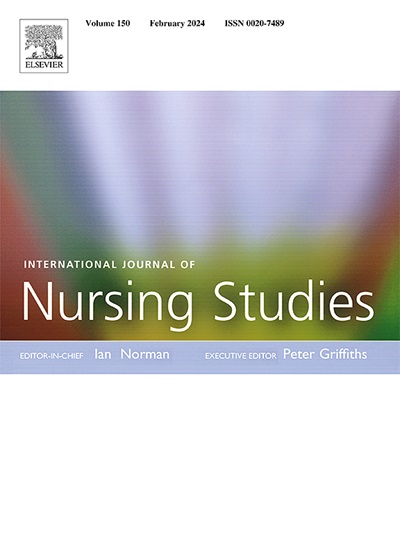老年人埃德蒙顿虚弱量表的测量特性:系统回顾和荟萃分析
IF 7.1
1区 医学
Q1 NURSING
引用次数: 0
摘要
虚弱是一种临床症状,其特征是对压力源的脆弱性增加和对健康的负面影响。埃德蒙顿脆弱量表是一个突出的多维工具,用于评估各种环境下的脆弱性。本文章由计算机程序翻译,如有差异,请以英文原文为准。
Measurement properties of the Edmonton Frail Scale in older adults: A systematic review and meta-analysis
Background
Frailty is a clinical condition characterised by heightened vulnerabilities to stressors and negative health consequences. The Edmonton Frail Scale is a prominent multidimensional tool for assessing frailty across various settings.
Objectives
This review aimed to synthesise and evaluate the certainty of evidence and the quality of Edmonton Frail Scale in older adults aged 60 and above with respect to its reliability (test–retest, inter-rater) and construct validity (convergent, known-group).
Design
Systematic review and meta-analysis.
Setting and participants
Older adults across clinical and community settings.
Methods
A comprehensive search was conducted across eight databases from inception to 29 January 2024. An updated search in MEDLINE (PubMed) on 10 April 2025 identified no additional eligible articles. COSMIN risk-of-bias checklist was used for quality appraisal, and evidence synthesis followed COSMIN guidelines. Random-effects meta-analysis and univariate logistic regression was used to quantitatively synthesise evidence for reliability and construct validity, respectively.
Results
Twenty studies involving 3852 older adults were included. The original Edmonton Frail Scale demonstrated sufficient construct validity across most populations, supported by high certainty of evidence. However, construct validity was inconsistent in acute care populations and in studies using modified Edmonton Frail Scale versions, where content adaptations (e.g., omission of performance-based items) may have affected psychometric performance. Meta-regression revealed that modified versions were significantly less likely to yield positive validity ratings compared to the original Edmonton Frail Scale (OR = 0.29; 95 % CI: 0.09–0.95; p = 0.042). Test–retest and inter-rater reliability were sufficient, though heterogeneity was considerable, and certainty of evidence remained moderate.
Conclusion
The Edmonton Frail Scale shows good overall reliability and validity in assessing frailty among older adults, particularly in stable clinical or community settings. However, caution is warranted when using modified versions or applying the tool in acutely ill populations. Future studies should validate Edmonton Frail Scale adaptations and enhance the precision of reliability estimates, especially in underrepresented regions and high-risk subgroups.
Registration
The protocol was registered in the International Prospective Register of Systematic Reviews (PROSPERO) database (CRD42024504735).
求助全文
通过发布文献求助,成功后即可免费获取论文全文。
去求助
来源期刊
CiteScore
15.00
自引率
2.50%
发文量
181
审稿时长
21 days
期刊介绍:
The International Journal of Nursing Studies (IJNS) is a highly respected journal that has been publishing original peer-reviewed articles since 1963. It provides a forum for original research and scholarship about health care delivery, organisation, management, workforce, policy, and research methods relevant to nursing, midwifery, and other health related professions. The journal aims to support evidence informed policy and practice by publishing research, systematic and other scholarly reviews, critical discussion, and commentary of the highest standard. The IJNS is indexed in major databases including PubMed, Medline, Thomson Reuters - Science Citation Index, Scopus, Thomson Reuters - Social Science Citation Index, CINAHL, and the BNI (British Nursing Index).

 求助内容:
求助内容: 应助结果提醒方式:
应助结果提醒方式:


